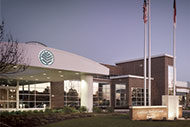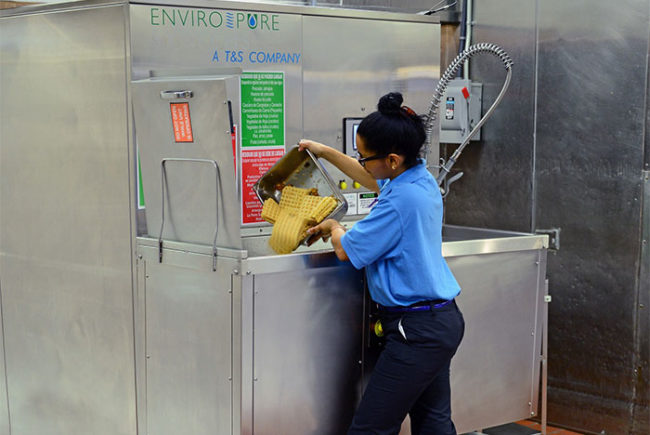An energy-saving project that included optimizing the building automation system (BAS) at one hospital and retrocommissioning the system at a second facility cut energy costs at UF Health, Gainesville, Fla., by more than $5 million in less than five years.
The American Society for Healthcare Engineering (ASHE) recognized both UF Health Shands Vista Rehab and Cancer Hospital South Tower with an Energy to Care Award for cutting energy use, reducing operational costs and freeing up resources for patient care.
Work at Vista Rehab, a 15-year-old facility, primarily involved fixing an inefficient, poorly operating BAS, while the newer Cancer Hospital South Tower work focused on optimizing its system, ASHE states.
Though only three years old at the time, the 500,000-square-foot Cancer Hospital South Tower required increased BAS optimization and efficiency to reduce costly cooling and reheating cycles.
Brad Pollitt, vice president of facilities, UF Health Shands, says data generated by the BAS greatly contributed to gaining efficiencies at the facility by tracking wasted energy. “While most buildings already had a level of automation, recognizing the ability to operate an optimized building instead of just tracking operations was a breakthrough for us,” he says.
Software added to the BAS allows trending of 150,000 points every 15 minutes and email notifications are sent to alert staff of possible system operations outside established parameters.
The data extracted from the analytics allows the facilities team to be predictive and proactive, and allows staff to calibrate and manage trends to prevent system breakdowns before they occur. The result has been an estimated $4.5 million in energy savings over the past five years at the Cancer Hospital South Tower.
Pollitt says a message that he wants to get out to other facility professionals is that an optimized BAS can serve as a diagnostic tool that detects wasted energy if you add a hard drive to the system for data storage and establish set points in the right places to collect data.
Before retrocommissioning the BAS at Vista Rehab, 85 percent of the variable air volume (VAV) boxes never went out of reheat mode during the warm, humid summer months, which created a costly cycle to maintain the correct temperature.
Retrocommissioning focused on:
• Cleaning and calibrating outside air sensors.
• Correcting preheat coil sequencing to minimize simultaneous heating and cooling.
• Replacing failed controllers.
• Resetting VAV flows to minimize simultaneous heating and cooling.
Despite a 14 percent increase in utility costs, Vista has saved about $83,000 through its retrocommissioning program, ASHE reports.
The facilities were two of 23 that ASHE recognized last year in its Energy to Care program, which is sponsored by Johnson Controls.





